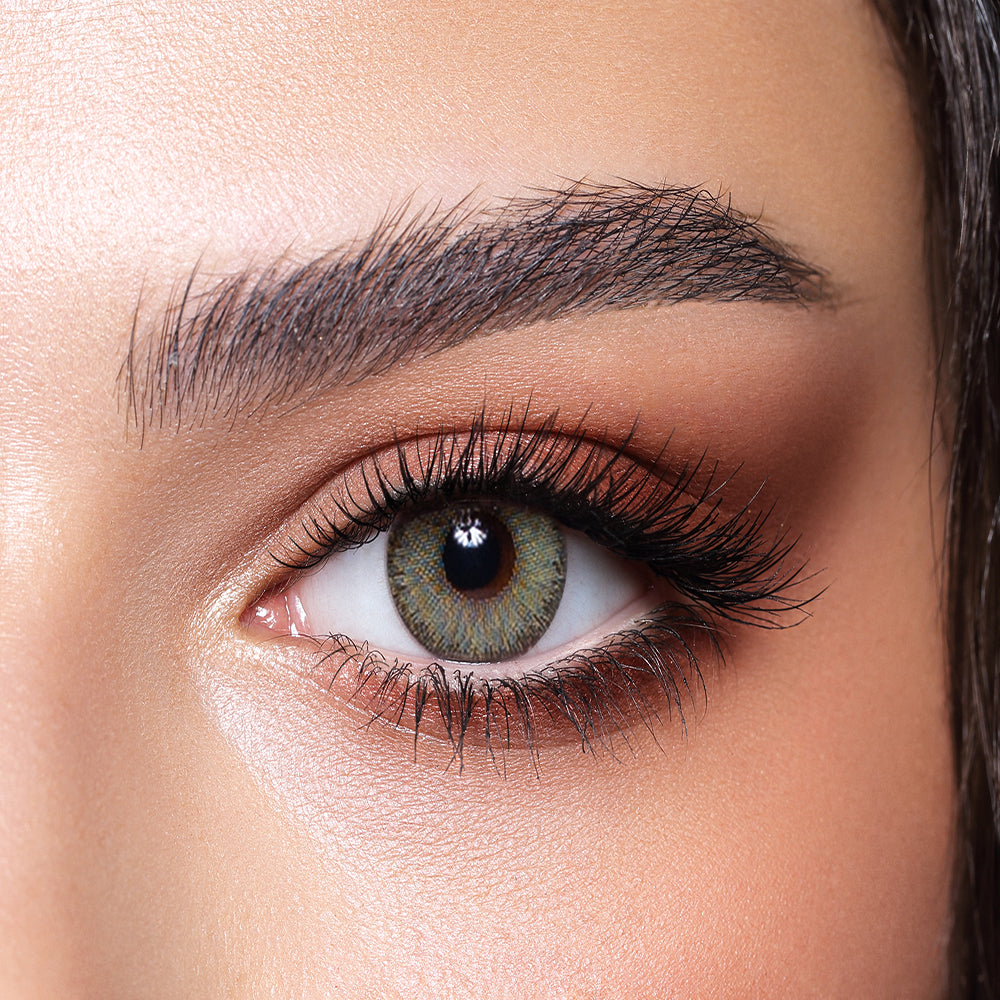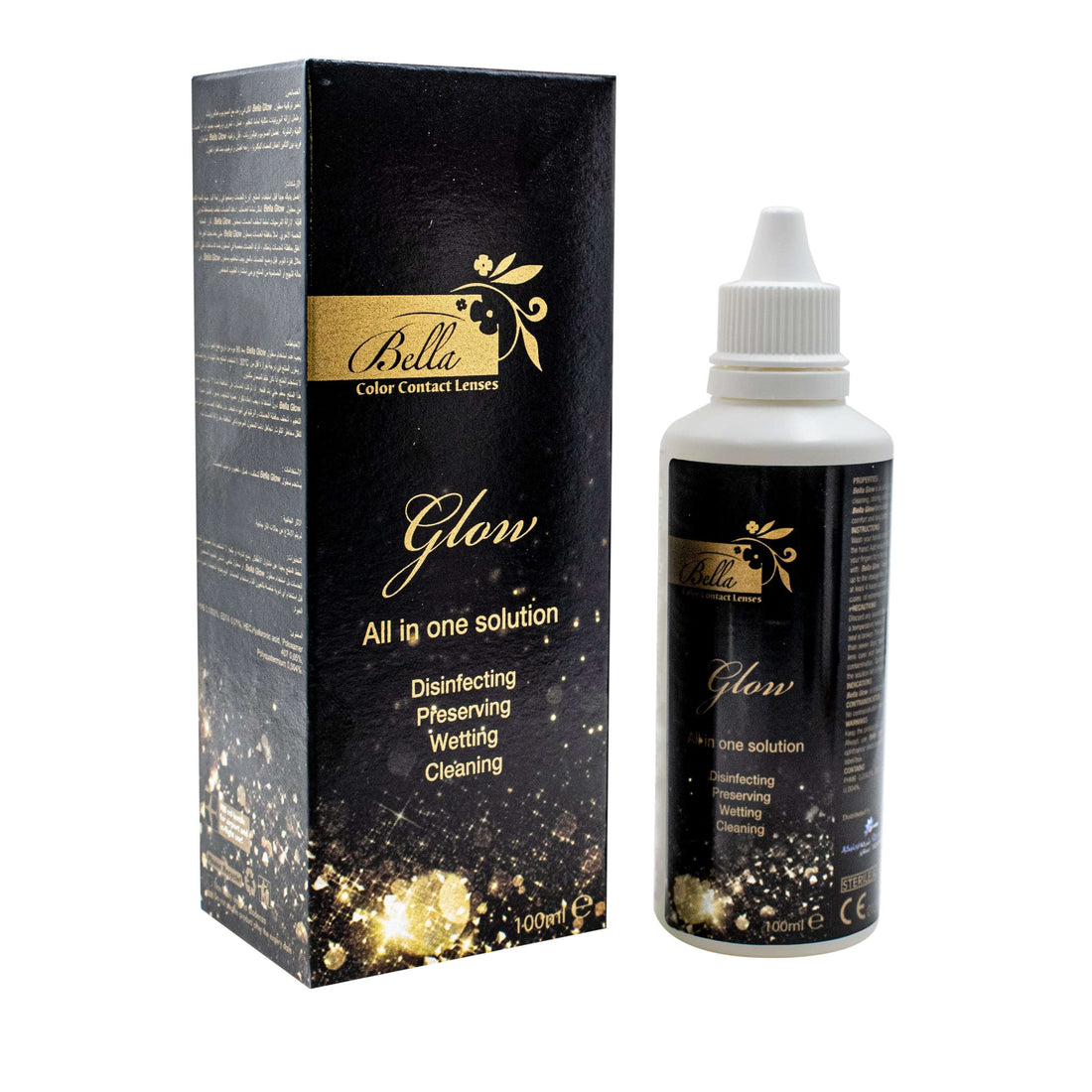Key Takeaway
Emerald green eyes are extremely rare in nature, occurring in less than 2% of the global population. While true emerald green eyes can occur naturally due to specific genetic combinations affecting melanin and lipochrome distribution, many people achieve this striking look through high-quality emerald green contact lenses from trusted retailers like Bella Lense.
Introduction
Have you ever been captivated by someone's stunning emerald green eyes and wondered if they could possibly be natural? You're not alone in this curiosity. Emerald green eyes represent one of the rarest and most mesmerizing eye colors in the world, sparking fascination and debate about their authenticity wherever they appear.
The allure of emerald green eyes lies in their vibrant, almost otherworldly appearance. Unlike the more common hazel or light green eyes, true emerald green eyes possess an intense, jewel-like quality that seems to shimmer with inner light. This distinctive appearance often leads people to question whether such striking eyes could occur naturally or if they're the result of colored contact lenses.
In this comprehensive guide, we'll explore the science behind emerald green eyes, examine their rarity in the natural world, and discuss both genetic and cosmetic ways to achieve this coveted eye color. Whether you're curious about the genetics of eye color or considering enhancing your own look, this article will provide you with expert insights into the fascinating world of emerald green eyes.
Understanding Eye Color Genetics
The Science Behind Eye Color
Eye color is determined by the amount and type of melanin present in the iris, along with the way light scatters through the eye structure. The genetics of eye color involve multiple genes, with the most significant being OCA2 and HERC2, located on chromosome 15.
Key factors that determine eye color include:
-
Melanin concentration: Higher levels of eumelanin create darker colors (brown, black)
-
Melanin distribution: How melanin is spread throughout the iris
-
Lipochrome presence: Yellow pigments that can influence green tones
-
Rayleigh scattering: The way light bounces off iris structures
-
Iris thickness: Affects how light penetrates and reflects
The Rarity Spectrum of Eye Colors
Eye colors can be ranked from most common to rarest:
-
Brown eyes: 70-79% of the global population
-
Blue eyes: 8-10% globally
-
Hazel eyes: 5% globally
-
Amber eyes: 5% globally
-
Green eyes (all shades): 2% globally
-
Gray eyes: Less than 1%
-
Heterochromia: Less than 1%
-
True emerald green: Less than 0.1%
Are Emerald Green Eyes Natural?
The Natural Occurrence
Yes, emerald green eyes can occur naturally, but they are extraordinarily rare. True emerald green eyes result from a specific combination of:
-
Low to moderate melanin levels in the iris
-
High lipochrome concentration providing yellow undertones
-
Specific iris structure that enhances light scattering
-
Genetic variations affecting pigment distribution
Geographic and Ethnic Distribution
Natural emerald green eyes are most commonly found in:
Celtic populations:
-
Irish descent (highest concentration)
-
Scottish heritage
-
Welsh ancestry
Mediterranean regions:
-
Parts of Italy
-
Some Greek populations
-
Certain Spanish lineages
Middle Eastern populations:
-
Lebanese communities
-
Some Iranian ethnic groups
-
Certain Turkish populations
Distinguishing Natural from Enhanced
Identifying natural emerald green eyes versus contact lenses requires careful observation:
Natural emerald green eyes typically feature:
-
Subtle color variations within the iris
-
Natural limbal ring (dark border around the iris)
-
Consistent pupil size and reaction to light
-
Slight color changes in different lighting conditions
-
Natural eye movements and blinking patterns
Contact lenses may show:
-
Uniform color distribution
-
Slightly enlarged iris appearance
-
Possible edge visibility around the contact
-
Less natural light reflection patterns
-
Occasional lens movement during blinking
The Genetics Behind Green Eyes
Inheritance Patterns
Green eye color inheritance follows complex patterns involving multiple genes:
Primary genetic factors:
-
Both parents must carry genes for light eye pigmentation
-
Recessive traits from both lineages must align
-
Multiple gene interactions affect the final outcome
Probability scenarios:
-
Two green-eyed parents: 75% chance of green-eyed children
-
One green-eyed parent: 25-50% chance depending on the other parent's genetics
-
Two brown-eyed parents with green eye genes: 6.25% chance
Molecular Mechanisms
The formation of emerald green eyes involves:
-
Reduced melanin production in iris melanocytes
-
Enhanced lipochrome deposits creating yellow undertones
-
Specific collagen arrangements affecting light scattering
-
Proteoglycan distribution influencing structural color
Achieving Emerald Green Eyes Cosmetically
High-Quality Contact Lenses
For those not naturally blessed with emerald green eyes, modern contact lens technology offers stunning alternatives. Professional-grade colored contact lenses can provide safe, comfortable, and remarkably natural-looking emerald green eyes.
Benefits of quality emerald green contacts:
-
FDA-approved materials for eye safety
-
Natural-looking color distribution patterns
-
Comfortable wear for extended periods
-
UV protection in many cases
-
Prescription accommodation available
Choosing the Right Shade
Selecting the perfect emerald green contact depends on several factors:
Skin tone considerations:
-
Fair skin: Lighter emerald shades for natural harmony
-
Medium skin: Rich, vibrant emerald tones
-
Darker skin: Deep, intense emerald for striking contrast
Natural eye color base:
-
Light eyes: Most emerald shades will show vibrantly
-
Dark eyes: Opaque lenses required for color coverage
-
Hazel eyes: Semi-opaque lenses can enhance natural green flecks
Safety and Care Guidelines
When using colored contact lenses:
Essential safety practices:
-
Always purchase from reputable vendors
-
Follow proper cleaning and storage protocols
-
Replace lenses according to manufacturer recommendations
-
Schedule regular eye examinations
-
Remove lenses immediately if discomfort occurs
Daily care routine:
-
Clean hands thoroughly before handling
-
Use recommended cleaning solutions only
-
Store in fresh solution daily
-
Never share lenses with others
-
Follow wearing time guidelines
Cultural Significance and Perceptions
Historical Context
Throughout history, green eyes have held special significance:
Ancient civilizations:
-
Associated with mysticism and supernatural powers
-
Considered a sign of divine favor in some cultures
-
Linked to fertility and nature worship
Medieval periods:
-
Sometimes associated with witchcraft
-
Considered both beautiful and mysterious
-
Featured prominently in folklore and legends
Modern Cultural Impact
In contemporary society, emerald green eyes are often associated with:
-
Beauty and attractiveness: Frequently featured in fashion and entertainment
-
Uniqueness: Valued for their rarity and distinctiveness
-
Mystery: Continue to captivate and intrigue observers
-
Confidence: Often perceived as striking and memorable
Frequently Asked Questions
Can emerald green eyes change color?
Yes, natural green eyes can appear to change color due to:
-
Lighting conditions (natural vs. artificial light)
-
Clothing colors that reflect into the eyes
-
Emotional states affecting pupil size
-
Time of day and atmospheric conditions
-
Seasonal changes in skin tone
Are emerald green eyes more sensitive to light?
Generally, yes. Eyes with less melanin (including green eyes) tend to be more light-sensitive because melanin acts as natural protection against UV rays and bright light.
Can you develop emerald green eyes later in life?
While rare, subtle changes in eye color can occur due to:
-
Certain medications
-
Age-related changes in melanin distribution
-
Eye injuries or diseases
-
However, dramatic changes to true emerald green are extremely unlikely
What's the difference between emerald green and other green eyes?
Emerald green eyes: Deep, rich, jewel-toned green with high saturation
Forest green: Darker green with brown undertones
Sea green: Lighter green with blue undertones
Hazel green: Green mixed with brown and gold flecks
Are there any health concerns with emerald green eyes?
Natural emerald green eyes may have:
-
Increased light sensitivity
-
Higher risk of certain eye conditions
-
Greater need for UV protection
-
No specific health advantages or disadvantages compared to other eye colors
Caring for Your Eyes
For Natural Green Eyes
Protection strategies:
-
Wear UV-blocking sunglasses regularly
-
Use hats or visors in bright sunlight
-
Consider photochromic lenses for prescription glasses
-
Schedule regular comprehensive eye exams
Enhancement tips:
-
Choose makeup colors that complement green eyes
-
Consider clothing colors that make green eyes pop
-
Maintain overall eye health through proper nutrition
For Contact Lens Wearers
Maintenance best practices:
-
Follow your eye care professional's recommendations
-
Use only approved cleaning solutions
-
Replace lens cases every three months
-
Never sleep in daily wear contacts
-
Keep backup glasses available
The Future of Eye Color Enhancement
Technological Advances
Recent developments in contact lens technology include:
Smart contacts:
-
Built-in sensors for health monitoring
-
Adjustable tint based on light conditions
-
Extended wear capabilities with improved materials
Surgical options:
-
Iris implants (controversial and risky)
-
Laser procedures (experimental and not recommended)
-
Gene therapy research (still in early stages)
Emerging Trends
The future may bring:
-
More natural-looking contact lens designs
-
Improved comfort and oxygen permeability
-
Customizable colors and patterns
-
Better integration with prescription needs
Conclusion
Emerald green eyes, while extraordinarily rare in nature, do occur naturally through specific genetic combinations that affect melanin distribution and light scattering in the iris. These stunning eyes represent less than 0.1% of the global population, making them one of the rarest natural eye colors.
Whether you're blessed with natural emerald green eyes or considering achieving this look through high-quality contact lenses, understanding the science behind eye color helps you make informed decisions about eye care and enhancement. The key to beautiful emerald green eyes—natural or enhanced—lies in proper care, realistic expectations, and choosing safe, quality products.
For those seeking to achieve this coveted look, modern contact lens technology offers safe and stunning options that can transform your appearance while maintaining eye health. Remember that regardless of your natural eye color, proper eye care and protection should always be your top priority.
The allure of emerald green eyes continues to captivate people worldwide, representing a perfect blend of rarity, beauty, and mystery that transcends cultural boundaries and time periods. Whether natural or enhanced, emerald green eyes remain one of the most striking and memorable features a person can possess.






